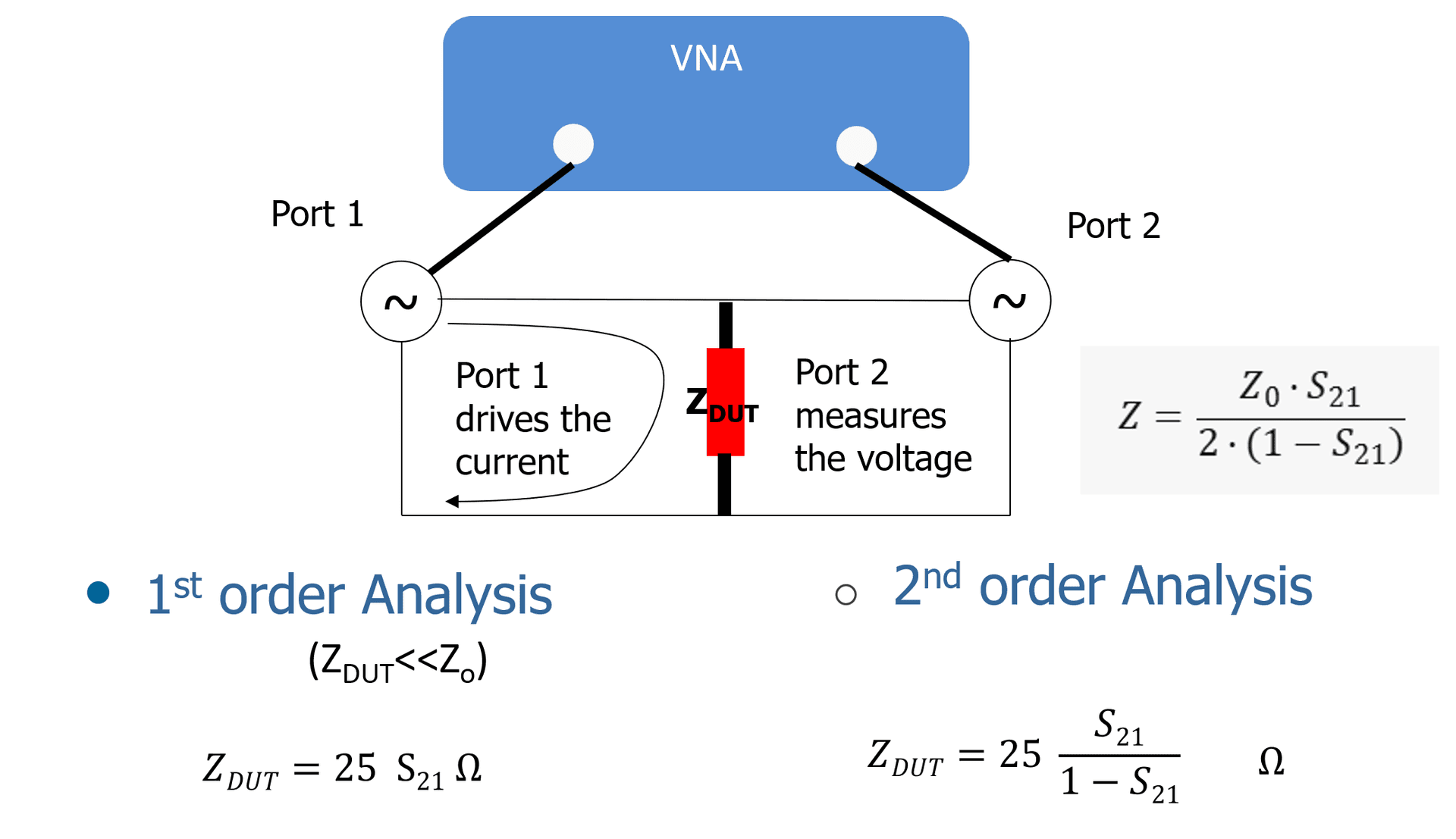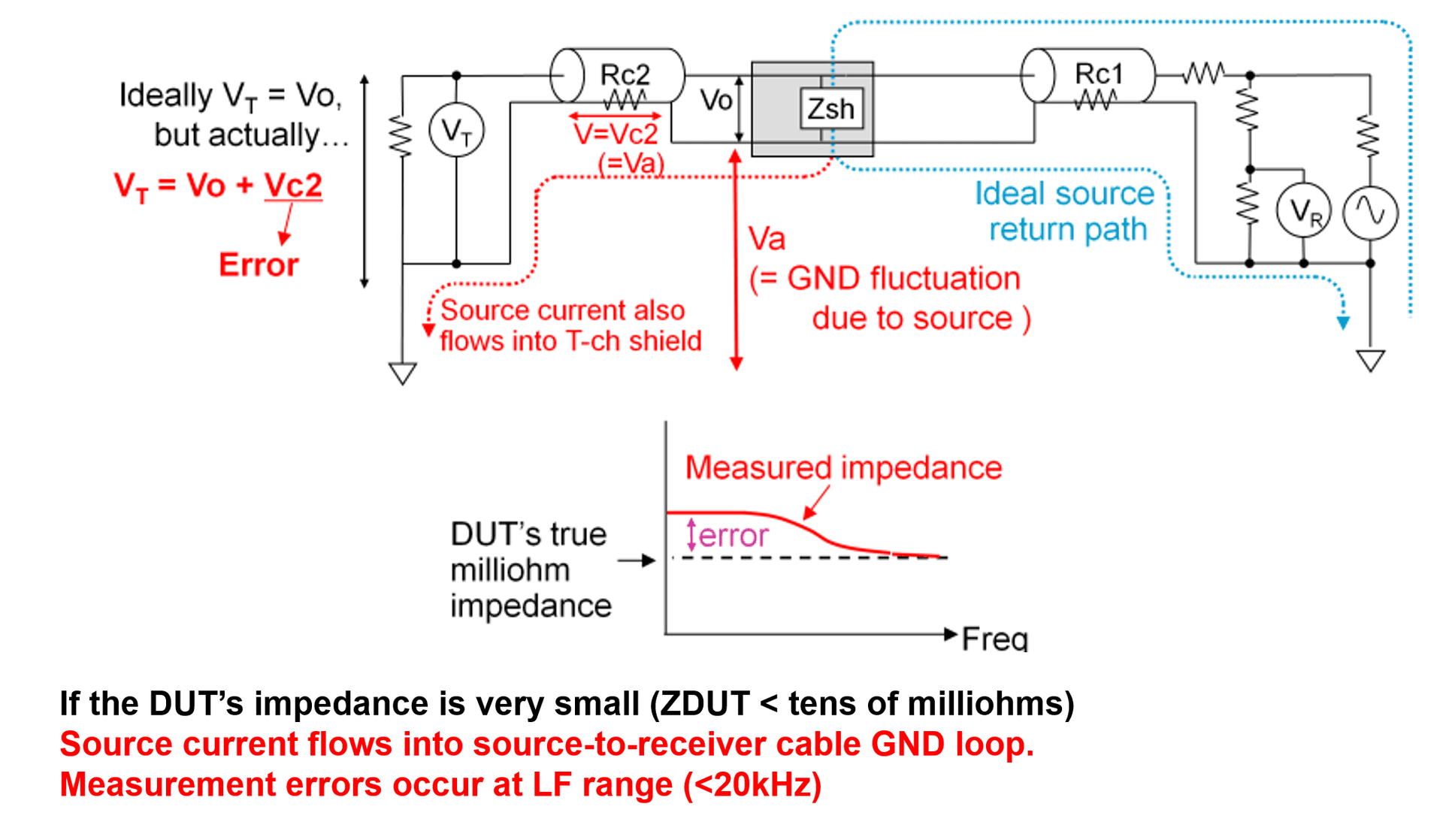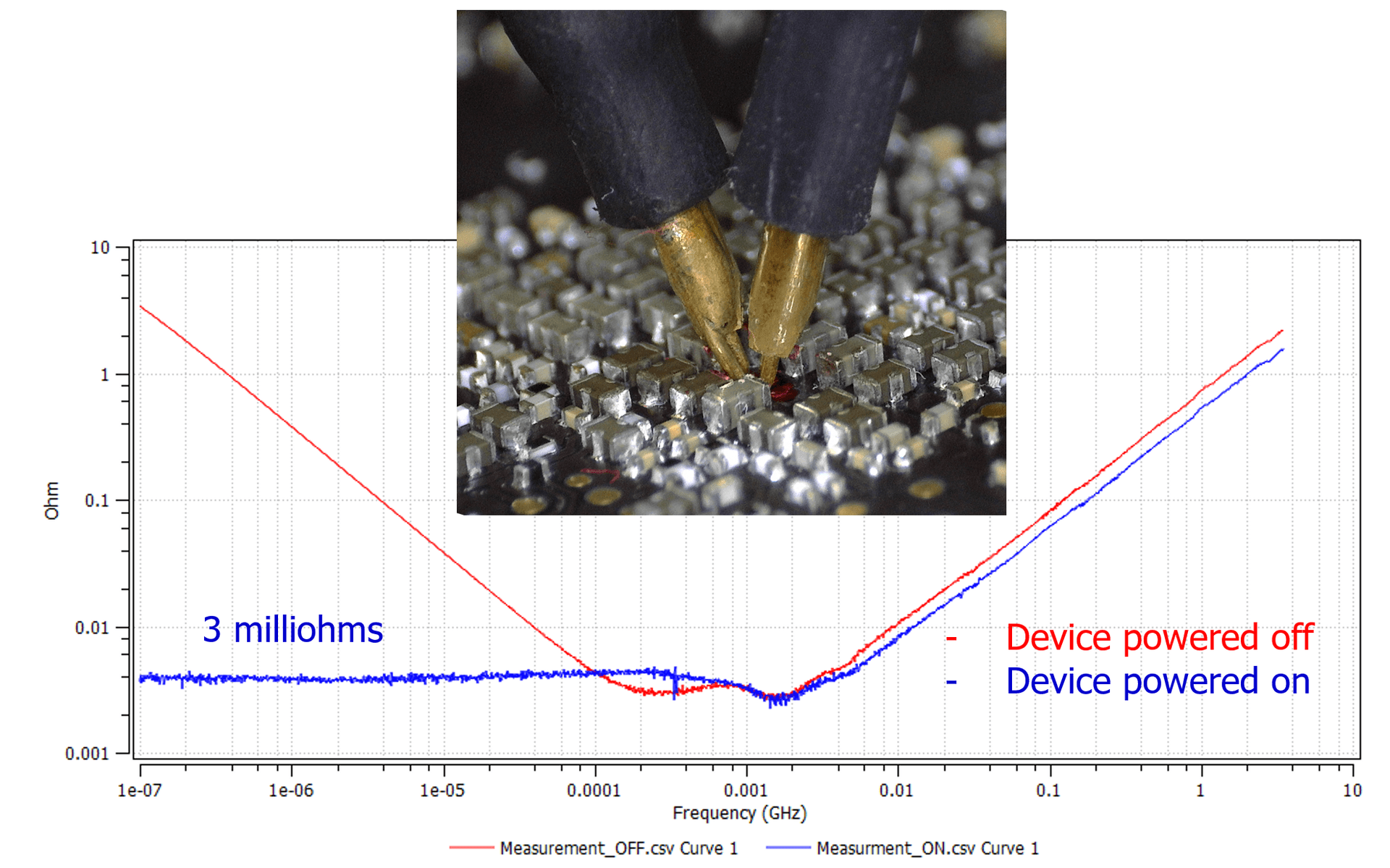AI processors draw massive, highly dynamic currents (often exceeding 1,000 A at core voltages typically under 1 V). To prevent excessive voltage fluctuations (noise/ripple) that could cause system failure, the PDN impedance must be extremely low, often in the milliohm or even microohm range across a wide frequency band. The 2-port shunt-thru method is critical for measuring the ultra-low impedance of a Power Delivery Network (PDN).
2-Port Shunt-Thru Method

Key factors to consider while selecting a PDN probe:
- Bandwidth: The probe's bandwidth must be sufficient to accurately measure the frequencies of interest.
- Pitch: The probe pitch must match the pad geometry on your PCB test coupon.
- Physical Robustness: In a manufacturing or lab environment, probes are subject to a lot of use. A good PDN probe should be robust and durable to ensure consistent performance over a large number of connections.
- Probe-tip Length: The probe's ability to reach the test pads surrounded by components is important.
Low-Frequency Error Caused by Ground-Loop Current

Use Transformer to Break the Ground-Loop Current

Milliohm PDN Measurement with R-Probe

Istvan Novak, a recognized authority in power integrity, has demonstrated how R-Probe can enable PDN impedance measurements down in the micro-ohm regime — see the links below for his published work.
